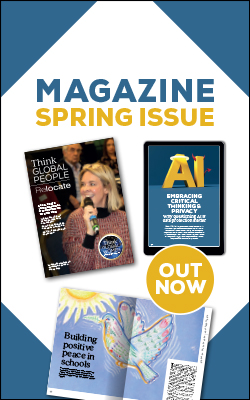Returning to work - Boyes Turner LLP
All businesses are different. How and where they want their people to work going forward post 19 July will differ too. Many managers may also have their own views leading to potential differences of opinion within businesses. Individual experiences over the last 18 months have also been different: some have suffered bereavements, isolation and loss, whilst others will want to return to the workplace some or all of the time.

Purpose of the return
Why do you want to return people to site? It may seem an odd question to pose, but one to consider, particularly if there is push-back from staff who are happy to remain WFH. Many businesses will be able to point to productivity, financial or operational issues necessitating a rethink on the current status quo. But what if WFH has not caused a productivity catastrophe? What then is the purpose for a wholesale return?The reasons to return might be hard to pin point: “collaboration”, “team work”, “connectivity”, “wellbeing”. Other issues such as “employee engagement”, “employee development” or “culture” are again cited as potential losers when we WFH. All worthy reasons, but where is the evidence in support? How can businesses demonstrate that the laborious nature of on-line calls should be replaced by coffee machine catch-ups? How have client services been impacted by not being in the office? If employees do not share the same enthusiasm for a return, is there a plan B? The government are clear that it is for employers to decide how they want their people to work; however, the length of time some people have been out of the habit of coming into an office – not to mention those who are anxious about a return – are employers’ hands tied?Think about the purpose of a return to site and get some views from across the workforce and from different generations. Those at the start of their careers may have different views from those in more senior positions. Also, remember that your competitors will be thinking about these issues – if your business is unwilling to be flexible, others may not leading to a potential “talent drain”.Communication and Planning
Formulating a communication plan is really important as messaging needs to be clear.Staff questionnaires are important but maybe think about repeating these after say 3 or 6 months to see if plans are working. Some employers may have employee forums set up or may have discuss plans with Unions. If you are speaking to your people ask what their thoughts are about returning, when and how. Some staff may be itching to return, others not so. Solutions such as a phased return, 2 days in/3 days WFH might be a way of supporting a return to site. Is hybrid working something that could work where there is a mix of people in and out each week on a more permanent basis?Virtual tours of the office are a good way of reintroducing some back the office and highlighting where things are different (particularly when we think about health and safety). We might also want to use the office in a different way, perhaps having a booking system or “hot desking”; again this will need to be explained. Team events rather than a whole staff meeting again might be sensible in the short term to get people back to being together and feeling comfortable in the environment.How are you going to communicate with staff about the return plans? All staff emails or vlogs? Will this be done at a team or management level. Start planning now for how communication is going to work across the business remembering that not all employees might have access to email and also remembering to communicate with all staff including those on sick leave, family leave or furlough.Related:
- 'Urgent' need to change workers 'isolation rules'
- How the new fast-track process will help attract the world’s best talent to the UK
Also, where can staff go for help – will it be their managers or HR? Confidential employee helplines or email? One really important point is to be consistent in terms of messaging. This is not the time for managers to go “off script” and start promising a way of working which is different to the overall plan. In some businesses which have maybe a retail arm and an office/support arm for example, may well decide to work differently and have different rules for different teams; this should be explained and justified. Be careful of managers creating different rules or expectations as this could cause inconsistencies and potential legal pitfalls. Some variations are to be expected but be sure that HR are on top of the detail and messaging.Also, remember that nothing is set in stone. What you decide now as a business or as a team may change in 6, 12 or 18 months so add in some flexibility to your plans.
Giving Notice of a Return
Employees should be given as much notice of a return to work as possible.Employees may need time to make preparations for a return to work, bearing in mind that the school summer holidays are upon us. Many holiday clubs are not operating and people may not have alternative childcare plans. If employees cannot return to work because of childcare how might this be managed? Temporary flexible working arrangements, perhaps, unpaid emergency leave to arrange care or through holiday? Employers and managers need to think about how the return is going to be rolled out. It’s not just children who need looking after, the “lockdown-pet” is also going to need arrangements being put in place.Whilst it is not the job of the employer to provide such care or fund employees to do so, many people have adopted a new life style over the last 18 months and based their arrangements on different priorities and assumptions as to how and where they are working. These arrangements may not be able to change overnight so having a mindful approach to people’s circumstances, talking to them and allowing time to make alternative plans is probably the best approach rather than disciplining employees for failing to following a lawful management instruction or docking pay for non-attendance (see flexible working requests)Health and Safety Considerations
What will the return to work look like from a health and safety perspective? A business’s covid secure plan will depend on their sector and what roles employees have. Whilst we expect social distancing rules etc. to be scrapped from 19 July, employers are still awaiting specific sector guidance.One big issue will be whether employers choose to continue to apply restrictions post 19 July? How does this sit with the government’s view that people should make their own choices? There could be tension between those staff who consider 19 July to be “freedom day” and the rules employers wish to retain. Also, there could be pressure on employers to maintain restrictions to avoid arguments of vicarious liability if there was an outbreak at work. Discussions will need to be had between mandatory –v- advisory. Choose policies which reflect your business, levels of risk and culture. Work with your people to find practical and common sense solutions and policies.Risk assessments are going to be of paramount importance with a focus on those who remain clinically vulnerable to Covid as well as internal infection control and risk management. This is on top of general health and safety requirements and assessments. Businesses will need a clear strategy on health and safety so revisit your policies and procedures as well as focusing on compliance with government guidelines.Businesses are also being encouraged to maintain hand washing for staff and customers, good ventilation and regular cleaning of areas where there is a lot of contact. Many employers may wish to stagger break times or maintain one-way systems. Some will need to continue with the use of PPE (or may want to) as well as follow sector specific guidance. Even if PPE is not required, some staff may also choose to wear face coverings, for example, if they are vulnerable whilst some employers may also wish to retain it. Will your business continue to use regular testing as part of your return to work regime? Are such measures still proportionate to the business/risk? Thinking about how these measures will work on a practical and common sense level is important so work closely with your facilities, health and safety and occupational health teams where necessary.What about communal areas – will there need to be usage rules or times when certain people can use it? Might we use our buildings in a different way? Meeting rooms and break out areas may take on a different purpose or have limits on numbers so make sure these are communicated.Again, this about communication. Employees, staff and visitors need to understand the requirements and expectations with regards to health and safety. Whilst employers have a duty to take reasonable steps to protect the health and safety of staff (and visitors) as well as complying with additional covid secure requirements, employees are also under a reciprocal obligation to take care of their own health and safety. Do you need to arrange some staff health and safety training, for example, videos or “how-to” guides are a good idea. Importantly, explain to staff what the risks are of not following the rules – not just breaching health and safety rules but also as a disciplinary offence. Update risk assessments and policies – communicate these with staff. What about your clients, are there any specific requirements that your staff need to be aware of and adhere to and what are the consequences if these are not.What adjustments need to be made for vulnerable employees and to their roles? Have managers or HR spoken to those who might have concerns and asked them for their views and input? A failure to make reasonable adjustments for those who are disabled could lead to discrimination claims so be aware.As well as considerations with regards to discrimination laws, if employees, and now workers, reasonably believe that returning to work places their health and safety in imminent risk of danger and they are dismissed or treated to their detriment as a result of their refusal to return, this could fall foul of automatic unfair dismissal rules (S44 and 100 of the Employment Rights Act 1996). Understanding concerns, listening and taking appropriate measures to support those who have worries should be encouraged rather than automatically following a disciplinary or dismissal route.Wellbeing
Returning to work could cause anxiety for some of your staff, particularly those who have underlying health conditions (or who live with someone who does). Many might be anxious about being with other people after such a long period of isolation. Some may be anxious about getting on public transport. How can we support those individuals in feeling able to return? What further adjustments might be needed to support those who have a disability, to comply with reasonable adjustment obligations?In addition, some staff might be feeling concerned about their own ability to return to work and have a lack of confidence. For someone who have been on furlough, for example, they have been away from the business for many months and may need some additional help from managers and colleagues to get back up to speed. Mentoring and coaching are other great tools to support and encourage.What other adjustments might employers make?Staggering start and finishing times could help in avoiding those rush hour peaks;- Continuing with a WFH arrangement might suit in other cases;
- Offering car parking spaces if people would prefer to travel by car rather than take public transport;
- Retraining on systems and protocols;
- Modifying or adjusting certain elements of a person’s role, depending on the circumstances;
- Offering support via HR to through an EAP;
Sickness rules and isolation
Although we expect some changes to the rules around self-isolation/NHS Track and Trace for those who have had 2 Covid-vaccinations, it is expected that some form of formal isolation rules will continue. As well as government tack and trace rules, businesses should also be adopting robust internal tracing and reporting procedures to maintain any internal virus spread.Is this also a good time to rethink the business’s approach to sickness and absence overall? Is the focus on remaining at home if unwell something that could be broadened away from Covid? We all remember being in the office and a colleague coming in with a cold or feeling unwell and us coming down with the same bug a few days later. Would focusing on absence in a holistic way work better – not just in terms of illness spread but also in terms of support and engagement with staff. Do staff feel supported when unwell or is there a pressure to be in work? This isn’t a charter for people to be off work with the slightest sniffle, but proper absence management procedures, reporting, return to work interviews and support could be put in place to support the genuinely ill and put off those who may want to beat the system.What about travel too. What if staff have to self-isolate following a return from a work trip or a holiday? Do we need to think about updating travel policies to include self-isolating or sickness upon return.Health and covid vaccination data
“Vaccine status” requests, mandatory vaccines, testing data, health questionnaires – such policies have legal, cultural and contractual issues for any organisation. Advice should be sought if your business does want to introduce such rules; however, as a guide always act with caution and ask “why” you are seeking such sensitive information from your people and can this be justified legally. Can we achieve our aim at protecting health and safety in a less intrusive or discriminatory way?Both the HSE and ACAS advise that the vaccination status of your workforce does not negate the need for following health and safety guidance and recommendations. As well as discrimination risks and also contractual issues of any “no jab, no job” policies, requesting health data raises huge issues relating to Data Protection. Employers will need to think carefully as to whether it has a lawful basis under Data Protection laws to request such information. Employers should also undertake a data impact risk assessment. Given the sensitive nature of such information, who will have access to the data (and why), what/where/how will it be stored and used. Employers must be open and transparent.What happens if someone refuses a request to share their vaccine status or take the vaccine? Will employers resort to taking disciplinary action? Could this lead to unfair dismissal claims? Why have they refused the jab – is this because of an underlying health condition or disability, for example? Could such a policy lead to age discrimination claims? Policies of this nature are risky and will depend on the circumstances of each case so please take advice. However, it is important to think about what might happen if an employee refuses a request, as well as whether the request itself is reasonable and whether it can be objectively justified in all the circumstances. There will also be sector specific rules to consider.Whilst some may be considering such a policy for new staff, again this is not without risk. Whilst new starters do not have qualifying service to being unfair dismissal claims, there is still a risk of discrimination claims.Whilst many have been keen to share their news of the “jab”, some may not be so be sensitive to those who are hesitant.If employers want to support the vaccination effort what about offering paid time off or paid sick pay for those who have a reaction.For those who are considering asking staff for information about their vaccine status or looking at mandatory vaccine requirements, please take specific advice.Flexible Working Requests
As people reassess their working patterns and place of work, we could see a rise in the number of flexible working requests. All employees who have 26 weeks’ continuous service and who have not made a request in the previous 12 months, have the right to make a flexible working request, for whatever reason. ACAS tells us that requests have to be considered in a reasonable and non-discriminatory way as and when the request is made. Employers cannot pre-empt a request by turning down another.Although there are statutory reasons for turning down a request, has the WFH genie escaped the bottle? What are the employer’s reasons for turning down a request? Which of the 8 statutory grounds for refusal can the employer hang its hat on and what evidence does it have in support? As I said earlier, when we think about the purpose of the return to work, this is perhaps harder than it seems. Could this lead to grievances, discrimination claims or unfair dismissal claims/resignations. If businesses are inundated with requests, how will these be managed on a practical basis. Consistency of approach is also important here ensuring there is an approach adopted across the business rather than per team. Think about whether agreeing temporary changes to hours or a phased return instead of a permanent contractual change and also think about updating your policies for requesting flexible working.Businesses should also be thinking about how they can support their workers with children either in terms of working patterns but also around school self-isolation rules or absence rules. Some may be able to WFH, others maybe not so plan for how this can be supported by the business.Equipment and IT
What is going to happen to the equipment employees have taken home? Transporting chairs to and from the office is impractical, but has the cost of purchasing new office based equipment been considered? Will staff be required to “hot desk” and how does this work with wanting to encourage collaboration between teams. There might be security issues too of employees having company or other data and information on laptops being moved between locations or using personal devices so now is the time to also think about protecting your business’s confidential information. Also, a word around IT and security. Now is the chance to revisit how security and data is being managed day to day. Think about reviewing work from home policies, data policies as well as BYOD rules.Contracts of Employment
As we being to think about new patterns of work this could also mean revisiting contracts of employment or employer benefit schemes. Do we need to offer travel allowances or season ticket loans now if staff are commuting less? Might employers want to look at home working policies or clauses in contracts which will allow for short time working, layoff or future furlough? Remember that contracts cannot be amended without consent and also if “fire and rehire” could be used, think about possible numbers and whether collective consultation rules need to be complied with. Culture and engagementUndoubtedly there will be some good practices and benefits businesses will want to keep moving forward whether staff are at work, at home or working in a hybrid way . Daily or weekly meetings, wellbeing initiatives and group events are all things businesses may want to keep. Some clients have reported their people feel more connected as teams have talked more than they did before when in the office. What can we keep or develop to help our managers? Could some remote or hybrid leadership training be helpful?Many managers have been grappling with a 2 or 3 tier workforce with some of their teams in/out/on furlough. As the furlough scheme ends and employees return to working together – with maybe some in and some out – how can managers ensure their teams are inclusive and that work is being equally distributed amongst teams and not just to those who are “present”. Equality and inclusivity initiatives should continue to be driven forward.Role of the Line Manager
Our line managers are going to be crucial as we navigate the next few months. As well as being the mouthpiece of management their approach to the new ways of working will be crucial in terms of messaging and employee engagement. Listen to your managers and make sure they are supportive of the proposed new methods. All teams are different so can the overall model be flexed to take account of department variations. The line manager is also going to be the conduit for their teams as well so where can they raise concerns on behalf of their people as well as seek help themselves. Training, leadership development and support for your leadership population should also be considered.Getting it right
If we think over the last 18 months, there have been many things to celebrate. Many colleagues have been on furlough, some may not have returned and some are still uncertain about their futures. There is a balance between the practical and the legal and when making decisions we often spend too much time thinking about the “how” and not the “why”. There is also a balance between the “employee experience” and the “client experience”. Everyone’s experiences over the last 18 months have been different and a one-size fits all approach will probably not work. Know your staff and know your people. Be ready to listen and consider the risks. Also, be ready to review what has worked and what has not but be clear with your people what the expectations are and be ready to manage those who have reservations – whatever those might be.Be patient – this is still a marathon and not a sprint.Here more from Boyes Turners LLP.©2025 Re:locate magazine, published by Profile Locations, Spray Hill, Hastings Road, Lamberhurst, Kent TN3 8JB. All rights reserved. This publication (or any part thereof) may not be reproduced in any form without the prior written permission of Profile Locations. Profile Locations accepts no liability for the accuracy of the contents or any opinions expressed herein.









































